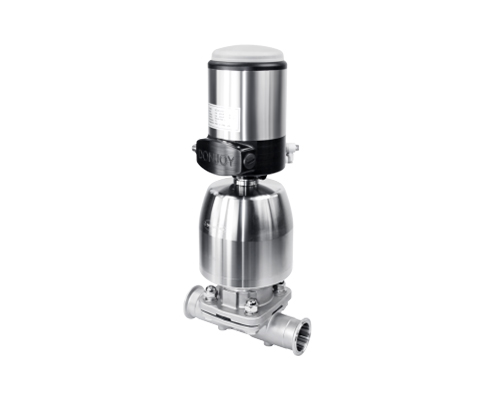Diaphragm valves represent a prevalent type of control valve, extensively utilized in liquid, gas, and powder pipeline systems across various industrial sectors. Their distinctive design confers numerous advantages and application-specific features. Below is an overview of key aspects related to diaphragm valves:

Structural Characteristics: A diaphragm valve comprises a valve body, valve cover, diaphragm, and actuation mechanism. The valve body is typically fabricated from materials such as cast iron, stainless steel, or plastic, while the valve cover is commonly made of cast iron, steel, or plastic. The diaphragm, positioned centrally, is constructed from elastic materials like rubber, polytetrafluoroethylene (PTFE), or nitrile rubber. The actuation mechanism may be manual, pneumatic, or electric.
Working Principle: Diaphragm valves regulate fluid flow through the movement of the diaphragm. When the valve is closed, the diaphragm forms a seal between the valve body and cover, preventing fluid passage. Upon opening, the actuation mechanism applies force to the stem on the valve cover, causing the diaphragm to lift off the valve body and enabling fluid flow. Adjusting the force exerted by the actuation mechanism allows for precise control over the valve's opening degree and, consequently, the fluid flow rate.
Diaphragm Valve with single gasket : This variant features a single diaphragm and achieves valve operation via compression or tension forces. Single-diaphragm valves exhibit a relatively simple and compact structure, making them suitable for controlling low-pressure, medium-temperature fluids with general characteristics. They offer reliable sealing performance and extended service life.
Diaphragm Valve with double gasket : Equipped with two diaphragms, this type is often installed symmetrically, one positive and one negative. Valve operation is governed by the pressure differential of air or liquid between the two diaphragms. Double-diaphragm valves provide enhanced sealing performance and operational accuracy, making them ideal for stringent applications involving high-purity fluids, corrosive media, or high-viscosity substances.
Diaphragm Valve with separate type gasket : In this configuration, the diaphragm structure is divided into two independent chambers: upper and lower. An intermediate chamber exists between the upper and lower diaphragms, where the applied pressure controls diaphragm movement. Separated diaphragm valves excel in sealing performance, anti-clogging capabilities, and ease of maintenance.
Advantages and Applications: Diaphragm valves possess several notable advantages, including dependable sealing performance, corrosion resistance, wear resistance, no leakage, no seepage, and straightforward maintenance. These attributes render them particularly suited for specialized working conditions, such as handling corrosive media, high-viscosity liquids, suspended particles, and flammable/explosive substances. Diaphragm valves find widespread use in industries such as chemical engineering, petroleum, power generation, metallurgy, pharmaceuticals, and food/beverage production.


